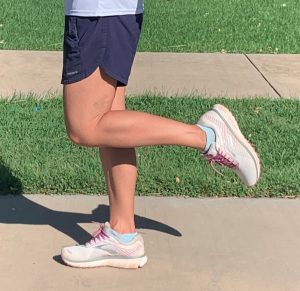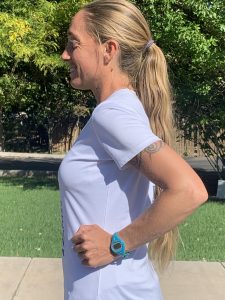Recover While You Run
Sep 26, 2019
When we think of running and recovery, we generally visualize stretching, massage, rolling, or other post-workout activities. These are all excellent activities, but they only happen after the running workout is complete. Instead of recovering only after you've completed a run, read on to learn about recovery DURING the running stride: not just after you’re done, but while you are still in motion.
As we all know, life happens in cyclical patterns. Each day the sun rises and sets. We wake and we sleep. The seasons change every few months, every year. Sports seasons come and go with the weather. The Olympics happen every two years. And while all of this is happening, we continuously strive for work-life balance. (When is the last time you had a vacation?)
Some of these cycles are stretched out over years, while some cycles are repeated daily. Either way, in order to perform optimally in life and sport, we need to easily maneuver through these cycles. One example is our need to alternate smoothly between rest and stress. I recall hearing stories about top pro golfers who smoothly transitioned from intense focus on the tee box to telling jokes and laughing as they walked down the fairway to their ball. This is possible not only in golf, but also in endurance sports.
The focus of this blog is our running stride, so let's take a look at that cycle. During the running stride, there are two phases: active and recovery. In the active phase, muscles are contracting and exerting energy to create movement and propel you forward. During the recovery phase, you do not require physical effort. Instead, you utilize the gravity and the stored potential energy that’s created during the stride’s active phase in order to keep you moving. Thus, we have the active and recovery cycle. Let's look into this more.
Lower Body Phases
 Active Phase
Active Phase
The active phase for the lower body begins when your foot hits the ground, taking on the weight of your body. This phase ends after that same foot has lifted up and the lower leg reaches about parallel with the ground. During this phase, muscles are engaged to stabilize the body on the ground, and the hamstrings and glutes fire to raise the leg and extend the hip.
Recovery Phase
Once the leg has reached its maximum amplitude behind the body, no more muscular effort is required. The leg lowers down to the ground effortlessly through the pull of gravity. You don’t need to do any work!
Try it!
First, stand up with your legs parallel, hip-width apart and feet pointed straight ahead. Now, lift one leg until your shin is about parallel with the ground. While doing this, you should feel the muscles on the back of your leg (hamstrings) shorten and tighten. Depending on your speed, form, terrain and length of stride, your hip may extend behind you to engage the glutes. Since we are keeping the thighs nearly parallel in this example with no hip extension, the main contraction will be felt in the hamstrings.
Once your leg is lifted, relax these muscles. This will allow your lower leg to drop to the ground simply from its own weight and the pull of gravity. At this point, you’ll notice that your foot lands right underneath you with a flat foot strike. (For more information on running technique read Alexander Technique and Running.)

Upper Body Phases
Active Phase
The active phase for the upper body begins when you pull your elbow back during arm swing. This phase ends when the wrist has reached the side of your torso. The active arm swing assists with maintaining your running tempo and counter-rotation between the upper lower body. You can read more about this in my blog: Improve your Running Form: Align Your Core. While you're in this phase, when you start to fatigue, try to focus on your arm swing because it helps to keep your legs turning over. This also will result in a faster speed.
Recovery Phase
When the wrist is at your side, you have created potential energy. Upon release, your arm will freely come forward until the elbow is at your side and upper arm is perpendicular with the ground.
Try it!
First, stand up with your legs parallel, hip-width apart and feet pointed straight ahead. Your elbows, which are at your sides, should be bent at 90 degrees. Now, pull your left elbow back until your left wrist is at your side. From this position, relax. Allow the arm to come forward without effort. Continue to practice, becoming more relaxed with each repetition.
Take Action
The next time you go out for a run, focus on the rest phase of your stride. In addition, see how little effort you can use on the active phase. Alternating between rest and stress DURING running increases efficiency and stamina, allowing you to run longer without fatigue.
Special thanks to Harita Davies for posing in these pictures. Harita is a two-time finisher of the 3100 mile race, https://3100.srichinmoyraces.org/, the toughest road running race in the world.
Stay connected with news and updates!
Join our mailing list to receive the latest news and updates from me.
Don't worry, your information will not be shared.
We hate SPAM. We will never sell your information, for any reason.

